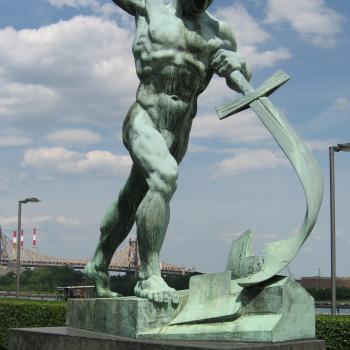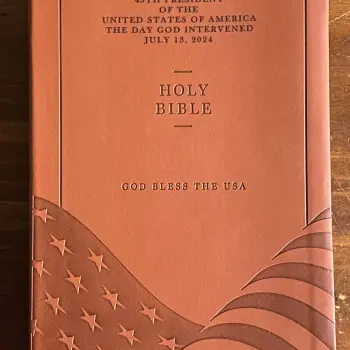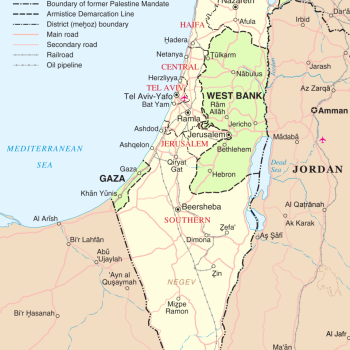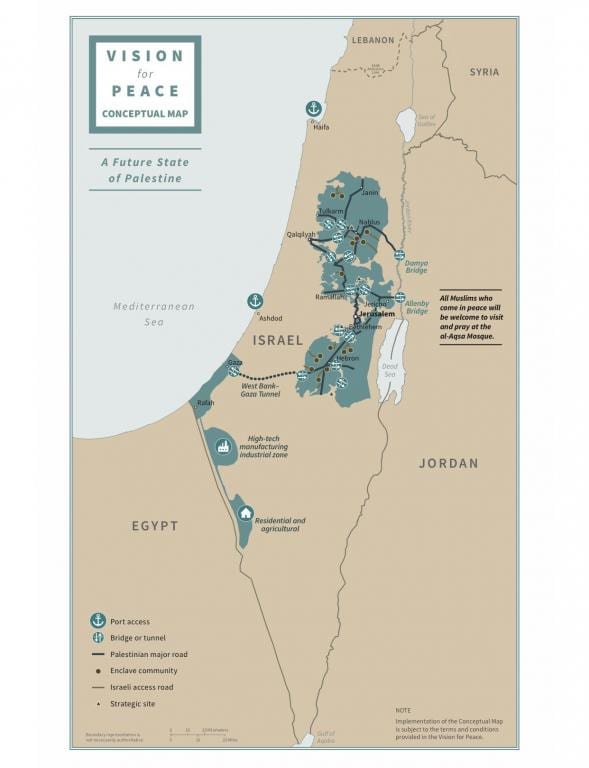 Jared Kushner–U.S. President Donald Trump’s son-in-law, advisor, and co-author of the Trump administration’s recent plan put forth to solve the Israeli-Palestinian conflict–held a bipartisan meeting yesterday with members of the Senate Foreign Relations Committee to update them on this new Mid-East peace plan. (See plan map here.) Palestinian leaders already had rejected this plan before it was even revealed, in late January. But Kushner reported that the plan has received positive reviews by Israeli leaders and even some Arab leaders. There was mixed views of the plan by EU leaders.
Jared Kushner–U.S. President Donald Trump’s son-in-law, advisor, and co-author of the Trump administration’s recent plan put forth to solve the Israeli-Palestinian conflict–held a bipartisan meeting yesterday with members of the Senate Foreign Relations Committee to update them on this new Mid-East peace plan. (See plan map here.) Palestinian leaders already had rejected this plan before it was even revealed, in late January. But Kushner reported that the plan has received positive reviews by Israeli leaders and even some Arab leaders. There was mixed views of the plan by EU leaders.
At a UN Security Council meeting two weeks ago, Kushner argued that constant failure to solve the Israeli-Palestinian conflict only leads to more radicalization among some Muslims, especially Palestinians, which is certainly true. That has been going on for decades. Kushner therefore concluded that something else needs to be tried as a solution. I’ve been saying that for fifty years.
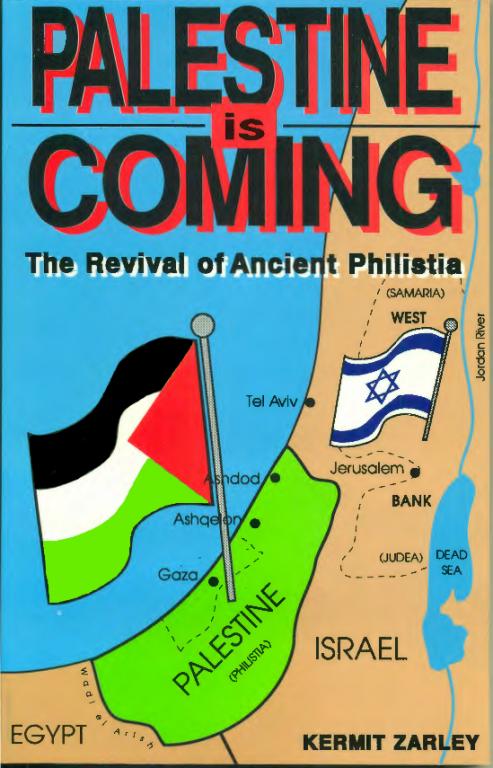 I wrote a book, Palestine Is Coming: The Revival of Ancient Philistia, published forty years ago, in which I assert that the traditional solution proposed by Palestinians–a Palestinian state in the West Bank and Gaza Strip–will not work and therefore there must be a different proposal. I insist in my book that biblical prophesy indicates this problem eventually will be solved with a Palestinian state only in the coastal plain as a very expanded Gaza Strip, much as during antiquity regarding the ancient Philistines, from whom Palestinians derive their name, with Israel annexing all of the West Bank.
I wrote a book, Palestine Is Coming: The Revival of Ancient Philistia, published forty years ago, in which I assert that the traditional solution proposed by Palestinians–a Palestinian state in the West Bank and Gaza Strip–will not work and therefore there must be a different proposal. I insist in my book that biblical prophesy indicates this problem eventually will be solved with a Palestinian state only in the coastal plain as a very expanded Gaza Strip, much as during antiquity regarding the ancient Philistines, from whom Palestinians derive their name, with Israel annexing all of the West Bank.
The Trump-Kushner plan is for Israel to annex the 121 Jewish settlements in the West Bank and the remainder of its territory to someday comprise a Palestinian state along with the Gaza Strip. But the Trump-Kushner plan also proposes that two parcels of Israeli land in the Negev, located along the Israel-Egyptian border, be designated as a part of the future Palestinian state as well. This is the first time that any proposal advocated by nations or other entities has included any other land other than that of the West Bank and Gaza.
This new development about designating some Negev territory for a Palestinian state represents a continuing of events over the past forty years that have been moving in the direction of what I lay out in my book. It is easily understood simply by viewing the map on the front cover of my book. So, in my proposal, that designated territory in the Negev would be considerably enlarged, and Israel would annex all of the West Bank.
Of course, my proposal requires the transfer of peoples, which will be costly. But I maintain that in the long term it will be the least expensive plan due large to security and the two states being truly “side-by-side,” which will be easier to govern and construct a thriving economy for Palestinians.
Palestinians are divided politically and ideologically between the Palestinian Authority, which governs Palestinians in the West Bank, and Hamas, which governs Palestinians in the Gaza Strip. I believe the latter would love my proposal if they could ever accept the existence of the State of Israel. But it is a different matter regarding Palestinians living in the West Bank because they would have to relocate westward.
Mahmoud Abbas is president of the Palestinian Authority (PA), and he denounces the Trump-Kushner plan. And both Israel and U.S. have nothing to do with Hamas, which the U.S. has on its terrorist list. But dealing only with Abbas is not fair to the other substantial portion of the Palestinians, who live in Gaza. I think this needs to change. Both the PA and Hamas need to be represented in this peace process in order for there to be a Palestinian state.



